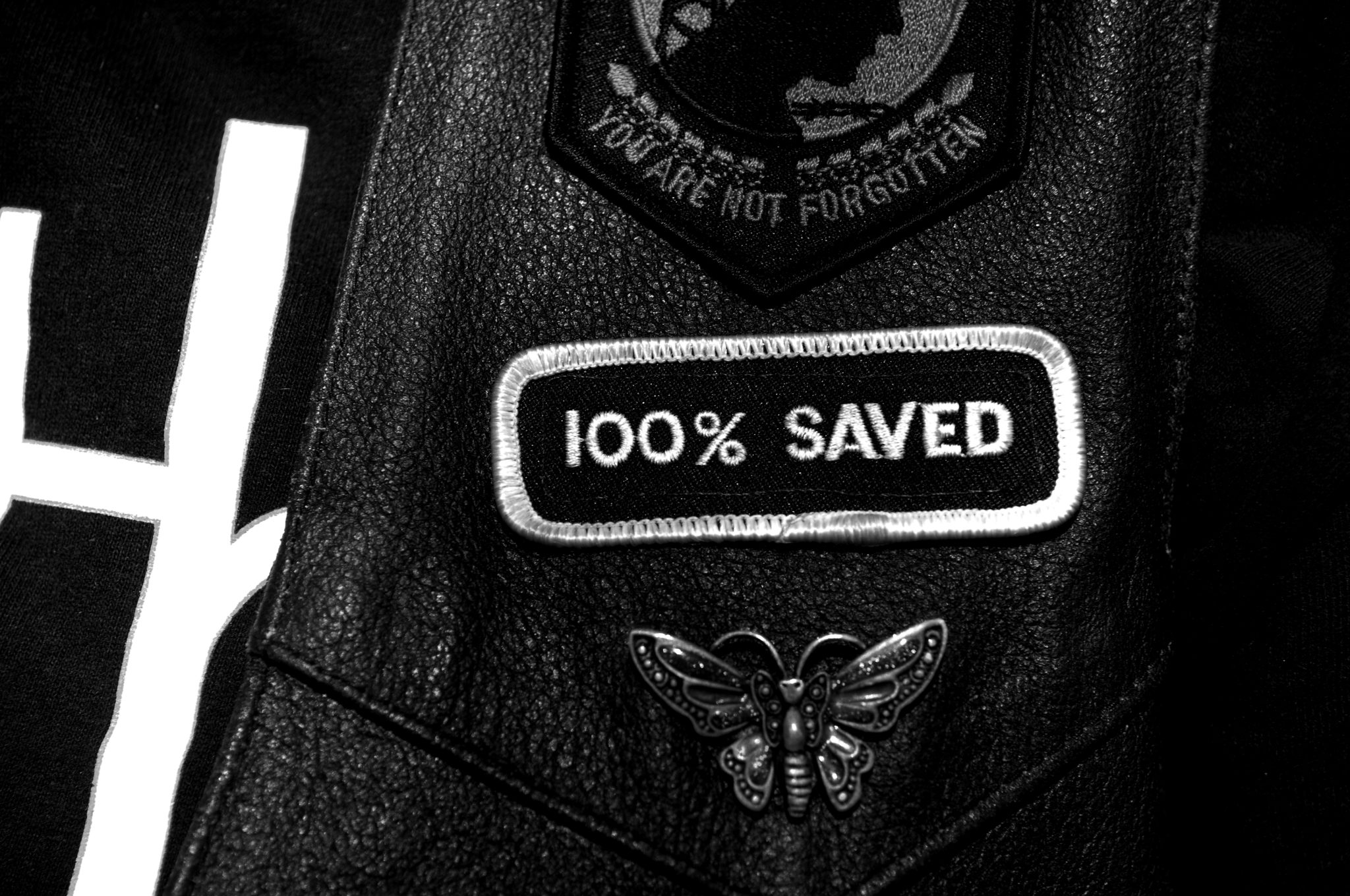All images by Christena Dowsett. Used with permission.
“What I see when I look back on the images, and what I remember from being there, is that this was just a community that needed each other and loved each other. Everyone is always touching and hugging.” says photographer Christena Dowsett about her project on the first Biker’s Church of Texarkana. “The children are prized members of the church. These are people who might not fit as well in other places, but found a home in each other.” Indeed, her photos are bound to change your opinion on the stereotypes of biker culture.
Christena is a full-time independent photojournalist based in East Africa. She graduated in May 2010 with a degree in photojournalism from the University of North Texas followed by two years as a staff photographer at the Texarkana Gazette in Texarkana, Texas. In March 2012 she moved to Kenya to work with the non-profit, Action Africa Help International, documenting their projects in the field and developing promotional material. Since then, she’s been published on a large variety of newspapers, websites and magazines.
For her, photography has been an interest since she was a little kid. Though it wasn’t until high school that she really started to delve into it.
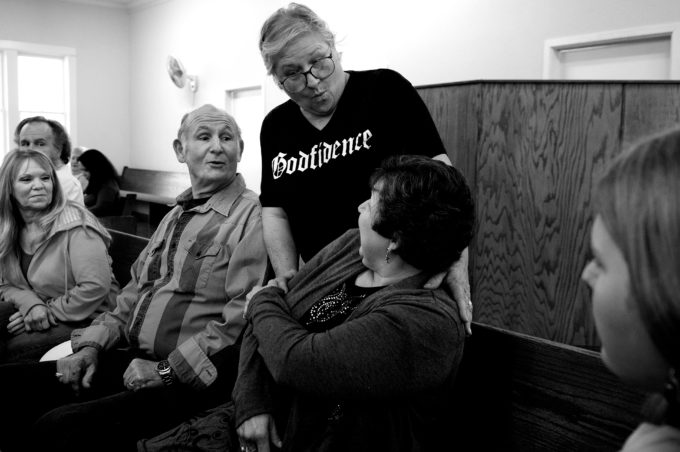
First Biker’s Church members greet each other before a Sunday morning service in Texarkana, Texas.
Phoblographer: Talk to us about how you got into photography.
Christena: The first time I remember really noticing photography was in books my parents had of Maasai warriors. We spent several years in Kenya when I was a child, and I came to understand on a foundational level that photography was a way I could communicate things without words. I was a contemplative child but often didn’t know how to express myself. I remember using disposable film cameras a lot as a child.
In high school I took a photojournalism class. I borrowed my mom’s film camera. Everything we did was in the darkroom, and that quickly became my haven during the tumultuous teenage years. My mom also suggested that I look in to photojournalism as a degree since I enjoyed both photography and writing.
I graduated in 2010 with a bachelor’s in Photojournalism from the University of North Texas. Then I worked two years in Texarkana, Texas as a staff photographer at the Texarkana Gazette. I’ve spent the last four years as an independent photographer in East Africa, and this year I started working with an NGO called World Concern. I still take on freelance work and continue with my long-term projects, but I’m focusing most of my energy in to this job right now.
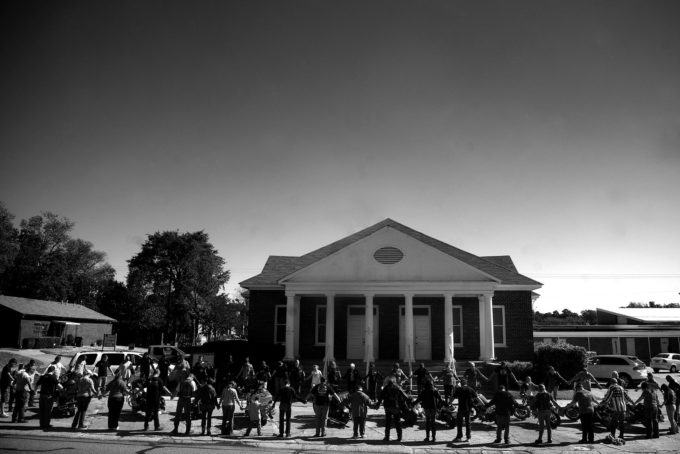
1st Bikers Chruch members circle outside their sanctuary for a moment of prayer before a Sunday morning service in Texarkana, Texas.
Phoblographer: What made you want to get into photojournalism and documentary work?
Christena: I think, like for many of us, the roots started with believing that we can change the world through our images, or at least the hope that we could. Now I’m just content to make the images I believe the world needs to see and trust that somehow, some way they make a difference. I still have hope, but it’s a bit more realistic now.
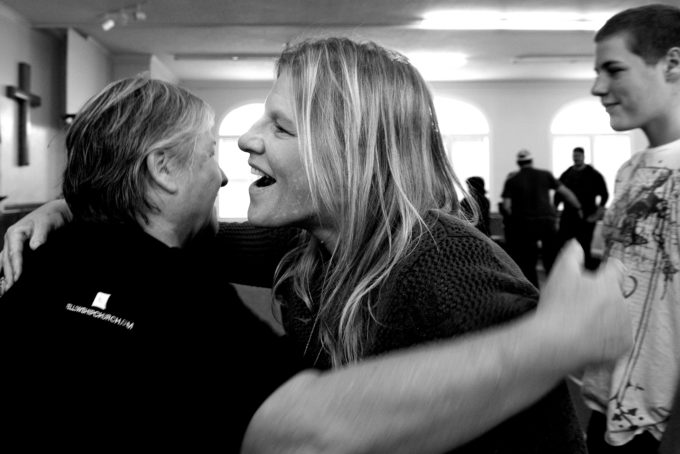
First Biker’s Church members greet each other before a Sunday morning service in Texarkana, Texas.
Breaking news was my first love in journalism, but I have started leaning more towards advocacy through photography. This is still documentary and still photojournalism, but with an added layer of pushing for action in response to the images. I do a lot of work with non-profits now, both paid and volunteer, and I find great joy in that. For years I felt like I was a sell-out to the traditional news circuit; many of my friends are journalists and I often compare my work to theirs. I believe in the work they do and want to support them as much as possible, but I’ve also settled more into feature and advocacy stories.
The Biker’s project is a good example of that because when I first started working on it I was a full-time staff photographer at the Texarkana Gazette. There was always something going on, wildfires, murders, typical breaking news, but I started to gravitate to the more in-depth projects. I loved working there, on all different types of stories, because it was so obvious the connection to how your images impacted the community. People would write letters or emails to say when they liked an image or wanted to challenge something we printed. Most days I woke up thrilled by the idea that I had the power to help people question the status quo in their community.
After the Biker’s story published in the local paper, the church attendance went considerably higher and has continued to rise since. Many people who ended up coming said they had wondered whether it would be a good fit for them but when they read the article they knew they had to try.
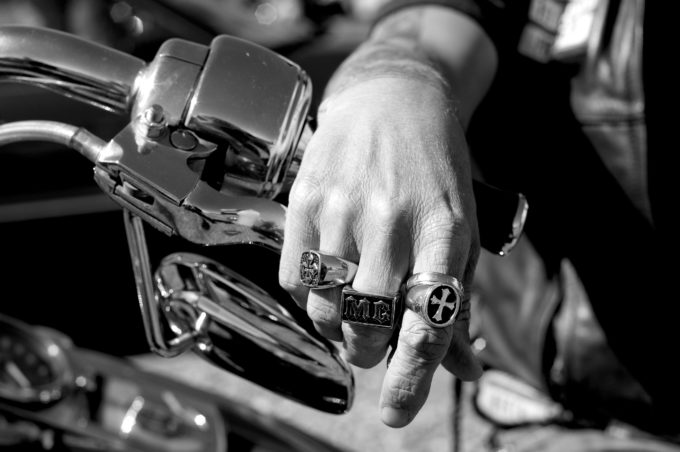
Bikers attend a revival in Kilgore, Texas.
Phoblographer: So tell us about this project. It’s quite fascinating to many of us as viewers, but what specifically attracted you to want to photograph this?
Christena: Well, from the first time I heard that there was a Biker’s church, my mind conjured up all these amazing images that were sure to present themselves if I ever got the chance to photograph with them. Naturally, none of those images were real.
But I was also drawn to their faith. To a faith that didn’t look like the others in the community. I was curious if they were all going to be crazy or if I would find humility and love in them, things that I feel are central to faith. So it was also a spiritual quest for me.
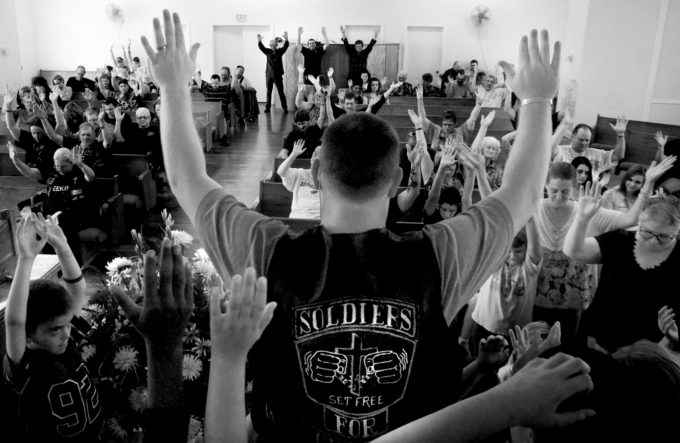
1st Bikers Chruch pastor, Matthew Butler, leads the congregation in prayer during a Sunday morning service in Texarkana, Texas.
It’s easy to have a certain idea of bikers, people see them as tough and mean; someone you can’t strike up a conversation with. But my experiences even before this project were that the majority of bikers are very tender people with a lot of love to give. I look tough, I have a lot of tattoos and used to have a lot of piercings – people think that I’m mean until they talk to me. So I guess it was easy for me to extend an olive branch to them, knowing that we all often misjudge people.
Also, not everyone in the church has a bike. In fact many of them don’t. But there’s an underlying culture there that they all relate to and bond over.
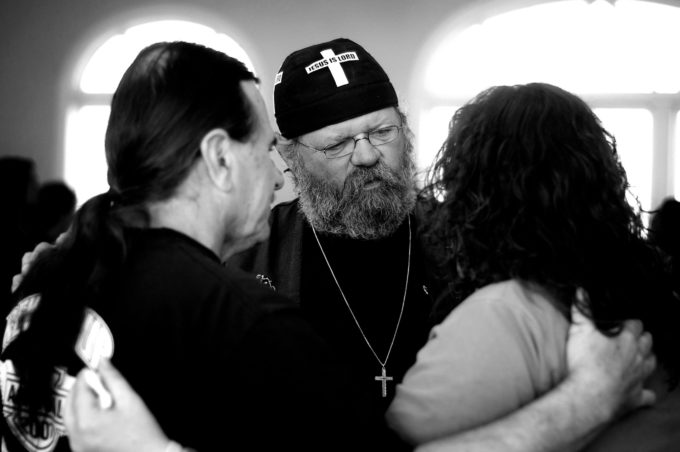
1st Bikers Chruch Elder, Danny Taylor, prays with members of the church during a Sunday morning service in Texarkana, Texas.
Phoblographer: What do you think displaying this project in Black and White did vs displaying it in color? Surely, it seems like black and white really makes us focus in on key specifics.
Christena: As much as I’d like to give a romantic reason for doing this project in black and white, it was actually a very practical decision. I was using several different cameras so the colors were really hard to match. And the light that came in to the sanctuary was super harsh during Sunday morning services, which led to really interesting shooting conditions. So after the first day or two of shooting I realized it had to be in black and white to make any sense.
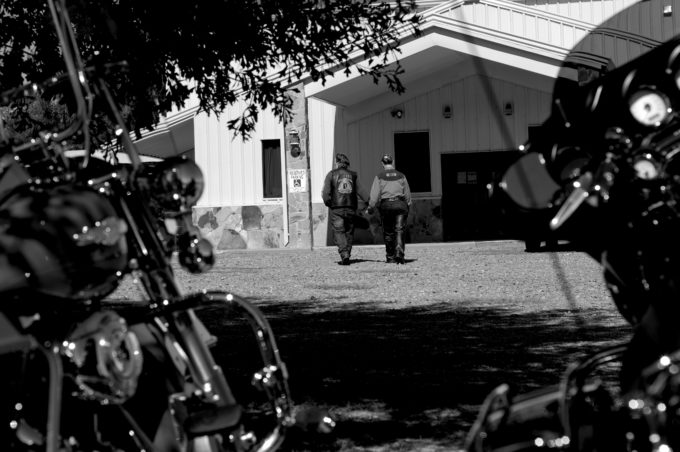
Bikers attend a revival in Kilgore, Texas.
I think it works well though, there are a lot of deep blacks, like in their vests and shirts, so it definitely helps people to stand out more.
Phoblographer: When you wanted to photograph this project, who amongst the community did you go about talking to first? What was the conversation like when it came to explaining your creative vision, intentions, etc.
Christena: I had heard that there was a Biker’s church, and had driven by their building for about a year before I started working on the project. I mulled the idea over and over in my mind, confident that they would want nothing to do with a newspaper photographer coming in. So for a whole year the idea just stayed in my head. I had a lot of anxiety and depression in life at that time, so it was easy to talk myself out of making a step toward them.
One day the church held a welcome home service for a member of their congregation who had served in the military and I was asked to photograph it for the newspaper. I knew I was accepted for this event and that they would be okay with me photographing it, but I didn’t know how they would feel if I asked to stick around a few months.
“I mulled the idea over and over in my mind, confident that they would want nothing to do with a newspaper photographer coming in. So for a whole year the idea just stayed in my head. I had a lot of anxiety and depression in life at that time, so it was easy to talk myself out of making a step toward them.”
When I got there, the congregation was immediately just so warm and open to me. They thanked me incessantly for coming. So by the end of the day I just went straight up to the pastor and laid it all out for him. That I wanted to do a big project on the church, start coming to their services, and try to show them as they saw themselves.
The pastor, Matthew Butler, was more than happy to open the church up to me and gave me access to anything I wanted. So of course, if I had his permission, the congregation was totally fine with me being there.
I’m also a Christian, so I think they were comfortable with me because of that. I told them that I didn’t want to make them out to be something they weren’t. If they had been super obsessed with their bikes or did animal sacrifices or something, I would have showed that, because that would have been them. But what I saw, and what I believe they are, is a group of people who speak the same language and love each other. Nothing more or less. To turn them in to a rag-tag bunch of fiery anarchists would have been lying.
It was a good lesson for me in learning to push myself. Even now I have a couple projects that I’ve been putting off, so it’s a good reminder not to judge a situation till you give it a shot. Often the stories I am most worried about getting access to end up being the best ones!
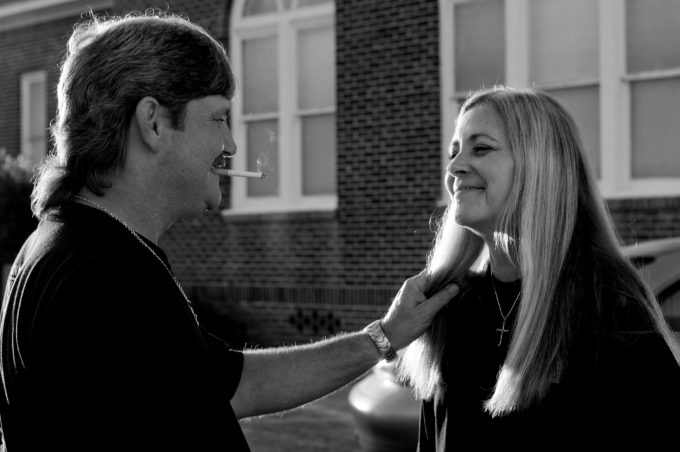
1st Biker’s Church elder Eddy Cook embraces his wife Becky after a Sunday evening service. Eddy left a life of drugs, cold turkey, after praying that God would take away his desire for such substance.
Phoblographer: So the people, they’re bikers that still embrace parts of biker culture but are much less “Sons of Anarchy” and more community gathering, right? How are they towards outsiders like you with a camera? Were there any sorts of altercations that you needed to think through?
Christena: Honestly, I never had any problems. I started off slow, didn’t move around too much during the services till they got used to me. It was good because it was one of the first long-term stories I ever did, so I was learning how to build relationships with them and earn their trust… but they just made it so easy. There are things that I chose not to shoot. For example a bunch of people hang outside the church before services and all smoke cigarettes together. I think I only have one cigarette in this edit. I could have shot that more and in hind-sight I think I should have, but half the time I was just sitting there smoking with them. I wondered if those shots would sensationalize them, which I was very focused on not doing. But I believe I presented them well, and more importantly, they think the images are a true representation of themselves.
“I told them that I didn’t want to make them out to be something they weren’t. If they had been super obsessed with their bikes or did animal sacrifices or something, I would have showed that, because that would have been them.”
Like the image of them holding hands in a circle outside the church. They are surrounding their bikes praying. You could easily twist that image, or the one with the motorcycle podium, into a different edit to make people believe they worshipped their bikes. But that was the easy route. The hard route was to show them as regular people who all happened to like bikes and go to church together.
What I see when I look back on the images, and what I remember from being there, is that this was just a community that needed each other and loved each other. Everyone is always touching and hugging. The children are prized members of the church. These are people who might not fit as well in other places, but found a home in each other.
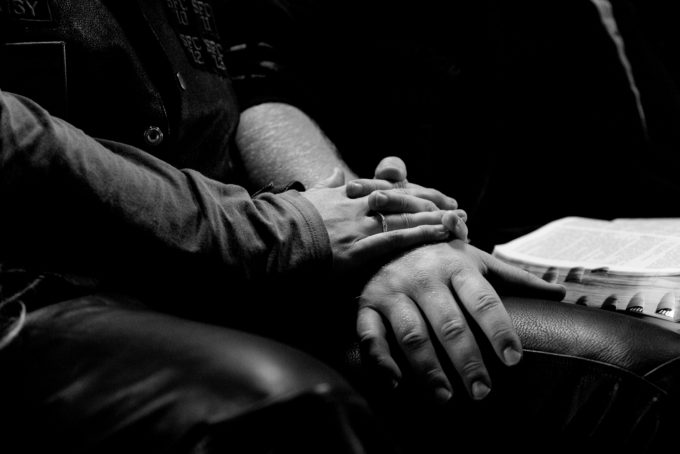
Bikers attend a revival in Kilgore, Texas.
I think I’m also drawn to that. To the outsiders. We moved around a lot my whole life so I was always the new kid looking in and observing people’s lives. In high school I hung out with the jocks, the goths, the musicians, the star students, and the gangs. I fit in everywhere and nowhere. And my life has been much the same way. So I look to things on the outside. Groups that don’t quite fit. Because I find myself there too.
It got to the point where, if I was having a bad day, I would pass by and see different church members at their offices or at home, just to feel better. So, in some ways they took me in like a lost puppy and became a home for me too.
When I went back to see them in 2013, a few of the elders and pastor did a big BBQ and had me over for lunch. The camera went down and we just sat as friends, talking about life. Those are sweet moments.
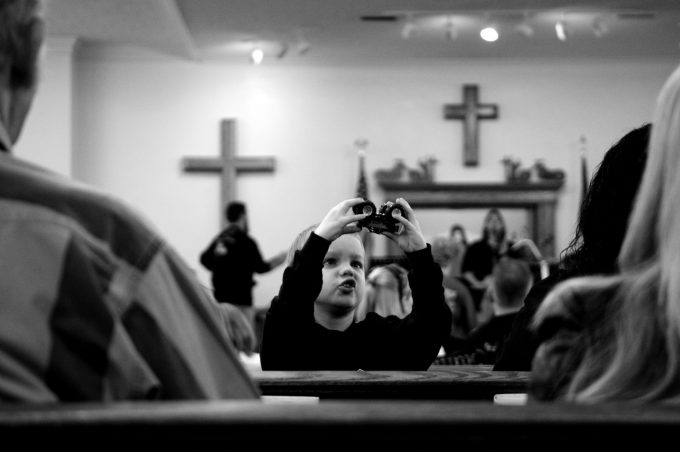
Children are prized members of First Biker’s Church in Texarkana, Texas.
I don’t know how other photojournalists feel when they work on these bigger projects, but I think you leave a piece of yourself with them, and you also take parts of them with you. You don’t walk away from these stories unchanged.
Phoblographer: How long was the planning stage for this project and how long did you shoot for? When you go about looking at and editing down the work, what questions tend to go through your mind to help you create something that constitutes for a sufficient and full documentary story?
Christena: I shot the story for about six months, visiting them at least once a week, and often on my own time. Because it was such a long project I was able to write the article and do a multimedia piece as well, so when it published I was proud as could be… and so were they.
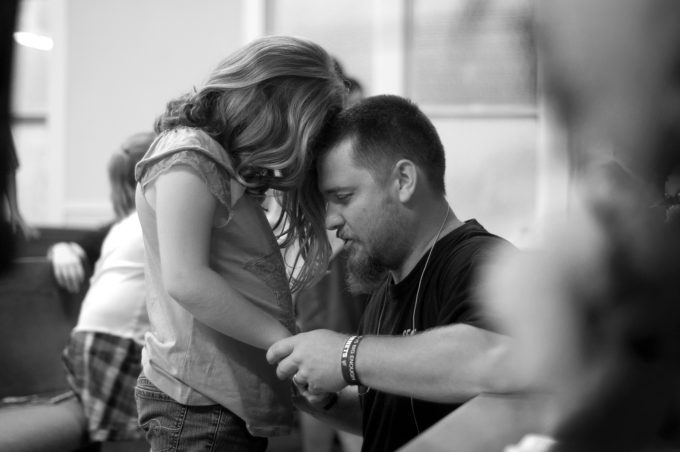
1st Biker’s Church pastor Matthew Butler prays with his daughter.
I was asked to reshoot it for Aljazeera America in 2013, so I was able to go back and spend a few days with them.
I’m such a different photographer than I was then, so I look at this project now and I see all the ways it could have been better. Like focusing on one family in the congregation. Or document them doing things as a group like feeding the homeless or going to biker rallies. At the time I was really constricted on my schedule and couldn’t take much time off to focus on anything outside the church. So that’s what the story became. A Sunday morning with the Biker’s church. And I find some beauty in that simplicity.
As far as editing the project now, it changes every time I look at the images. The current edit is focused more on the connection between people. When I look at this edit with my eyes, my heart feels what I felt when I was with them, and I think that’s really important.
There are so many images to choose from. I think I look at emotions first. And then try to make sure the images aren’t too similar. And then when I have a solid number I go back through and think about the story line. Each story is different so each edit is different, but that’s how I worked on this one.
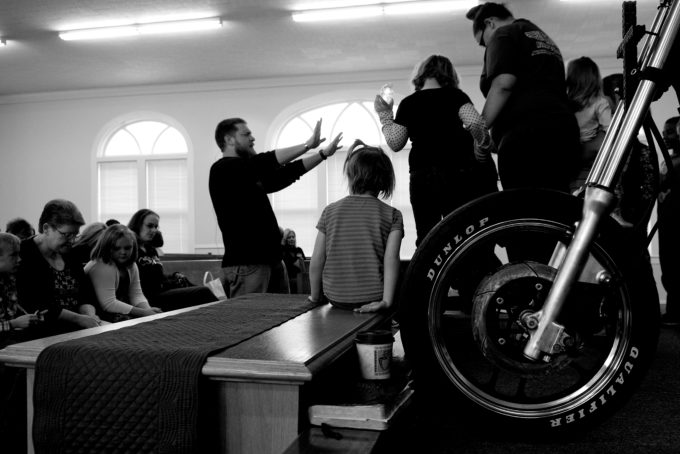
1st Biker’s Church pastor Matthew Butler prays over the children before Sunday School.
I live halfway around the world now, but I would love to have the opportunity to keep working on the project. I hope that one day I can because I know I could present it so differently now. But as is the case for all of us, you have to have financial backing to work on bigger projects. So now my focus is on my stories here in Kenya.
Phoblographer: Talk to us about the gear that you used. How do you feel it specifically helped you to create the images that you needed for the series?
Christena: I think the cameras I used were Nikon D90, D200, and D300s. My lenses are the average ones; a wide angle, a 50 and an 80-200 (which I don’t use often). To me, the gear is just gear, I can’t say that it makes a difference in the images.
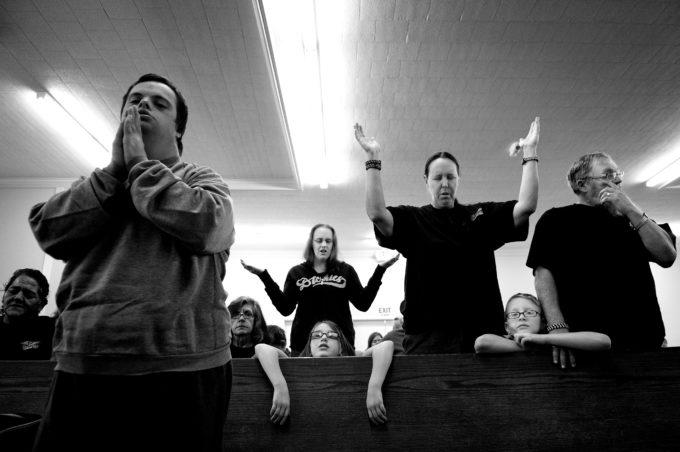
1st Bikers Church members lift their hands during worship on a Sunday morning service in Texarkana, Texas.
I’ve been really blessed to have supportive friends and family who have all helped me get new equipment when I couldn’t afford it, either by giving it to me, giving me loans, or selling me discounted gear.
They are the tools we use, yes, but they are just tools. You can make a crappy image with a $5,000 camera and an amazing image with your iphone. So I don’t put much weight on the gear.
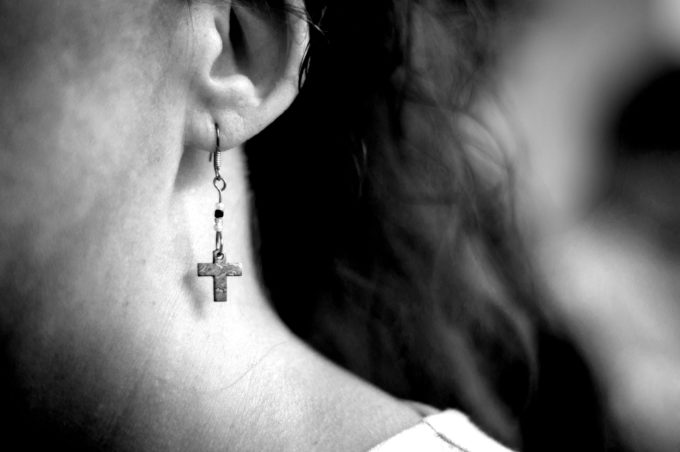
A church member attends a Sunday morning service at First Biker’s Church in Texarkana, Texas.
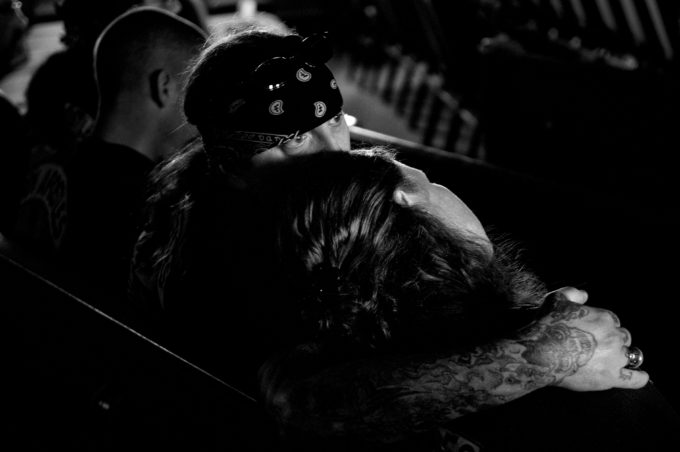
A couple embraces during church revival in Kilgore, Texas.
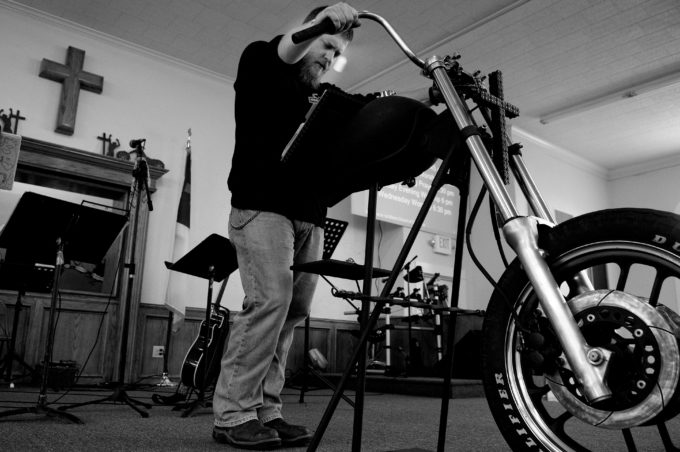
1st Biker’s Church pastor Matthew Butler stands at the podium during prayer. He doubles as a guitarist and vocalist for the church’s worship band.
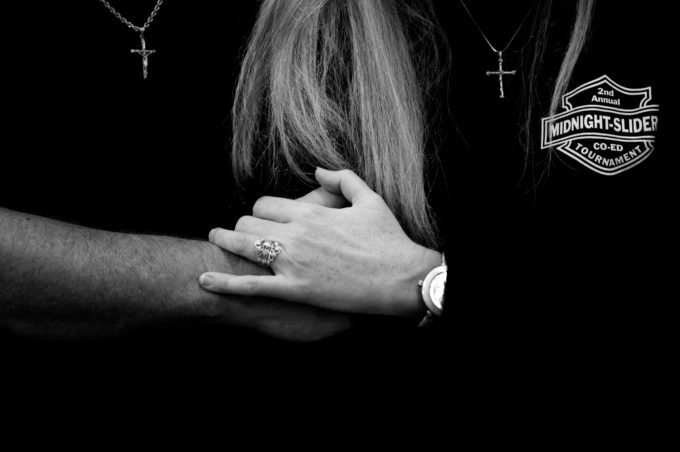
1st Biker’s Church elder Eddy Cook holds hands with wife Becky during a Sunday evening service. Eddy left a life of drugs, cold turkey, after praying that God would take away his desire for such substance.
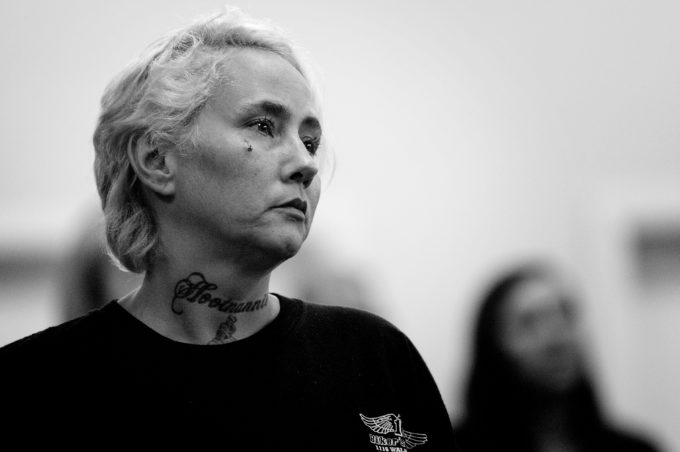
1st Bikers Chruch member Sadie Watson listens during worship on a Sunday morning service in Texarkana, Texas.


